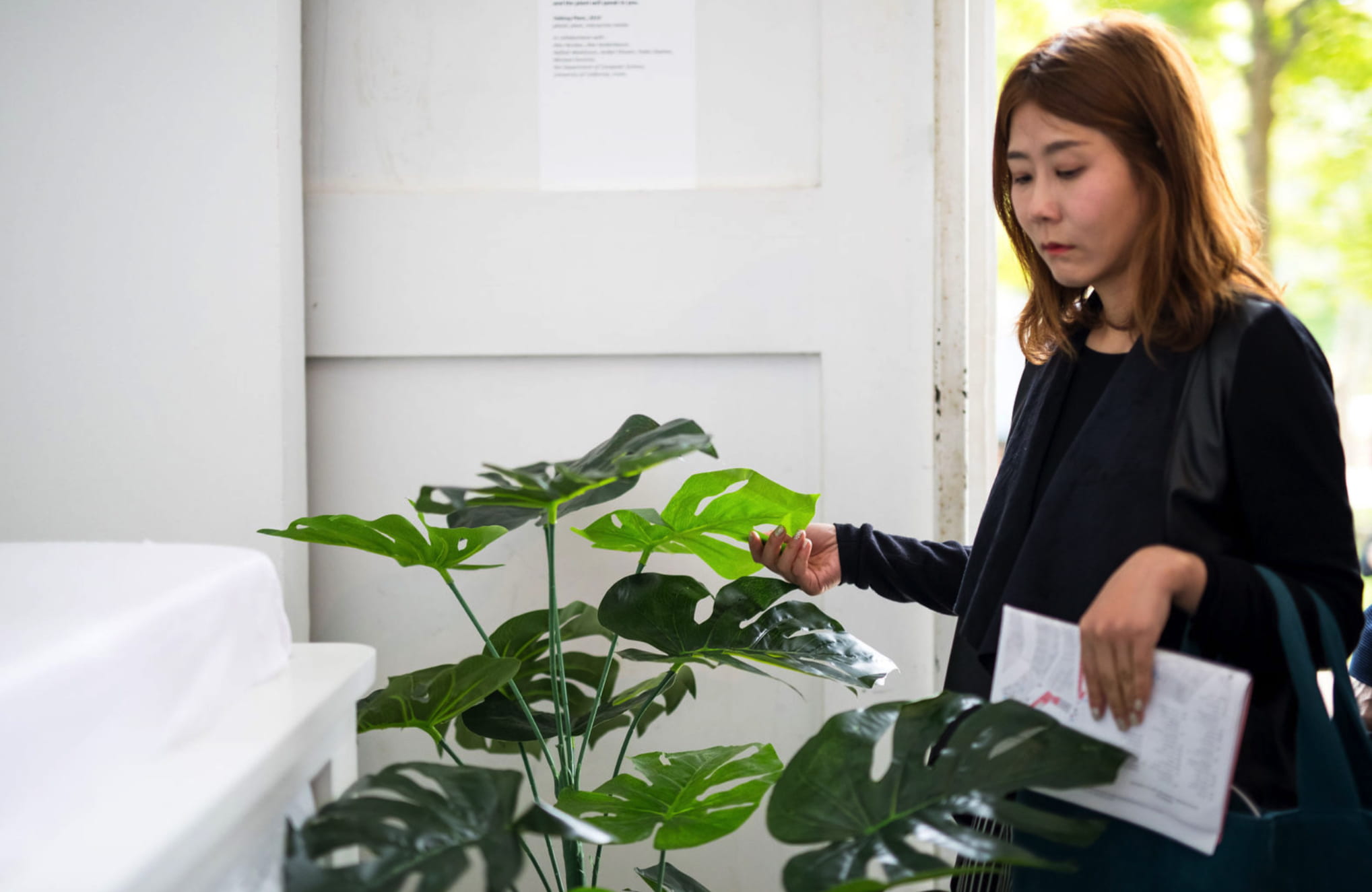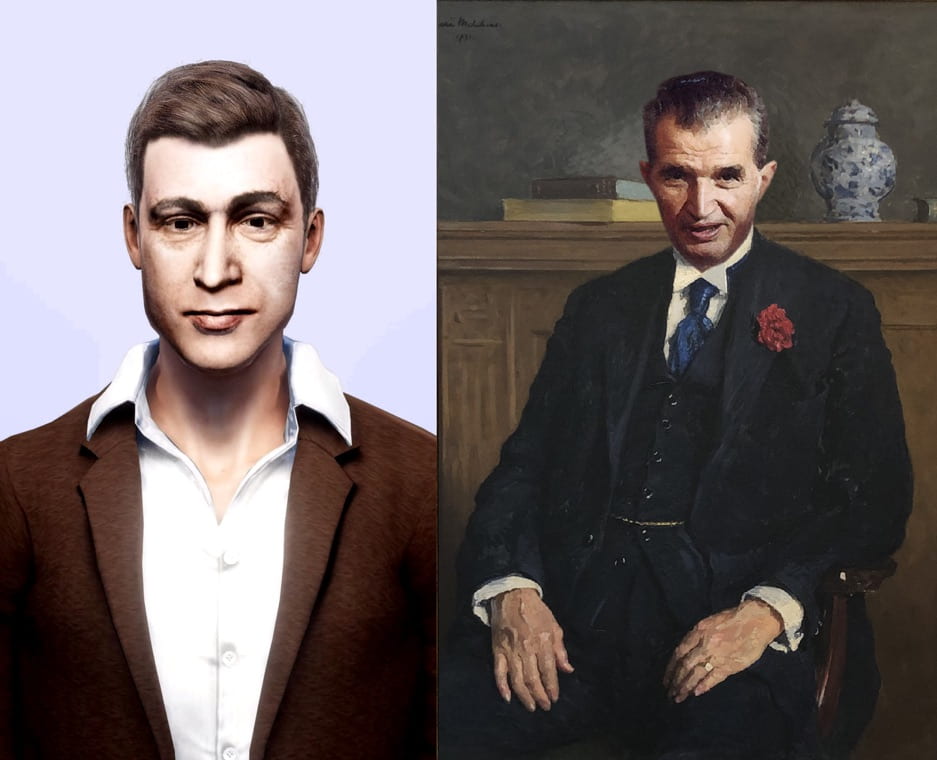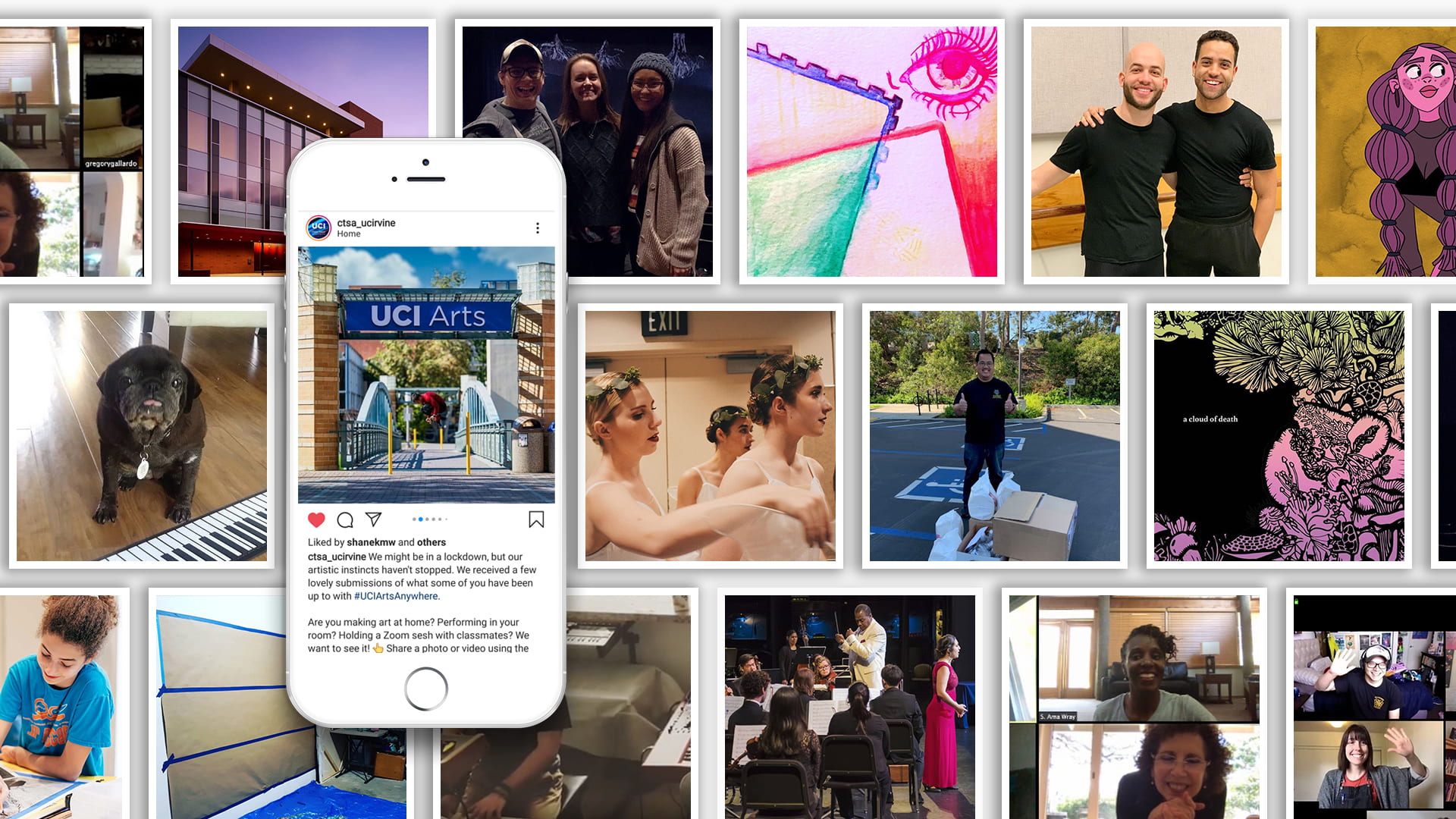UCI computer scientists breathe life into Venice Biennale installations
Collaborative artworks interact with viewers through artificial intelligence

Irvine, Calif., June 11, 2019 — Computer scientists from the University of California, Irvine are making a splash in the art world this year through their participation in Italy’s Venice Biennale, one of the oldest and most prestigious cultural festivals.
The team – led by Alexandru Nicolau, UCI Distinguished Professor and chair of computer science, and Alexander Veidenbaum, UCI professor of computer science – collaborated with Israeli-Romanian artist Belu-Simion Fainaru to create three art installations for the event. One is on display at the Romanian Pavilion in the Giardini della Biennale, and the other two are at the Romanian Institute of Culture and Humanistic Research in Venice.
Under the banner “Unfinished Conversations on the Weight of Absence,” all three works are examples of posthumanist art that combines computer-generated imagery and speech, using artificial intelligence to create an interactive experience for the viewer that aims to be both thought-provoking and emotionally involving, according to Nicolau.
“Talking Head” allows observers to interact with paintings of the 20th-century Jewish-Romanian poet Paul Celan and Romanian communist leader Nicolae Ceausescu, who – with his wife – was executed on Christmas Day 1989. Artificial agents for human discourse (also known as chatbots) are used to facilitate conversations between viewers and the avatars. The intention is to create a mild cognitive dissonance, Nicolau said.

“Interacting with these works puts the viewer off balance, creating an opportunity and space for considering these characters in a new light,” he explained. “Participants will see Celan in the context of the greater body of work of Fainaru and the Holocaust experience, and they’ll view Ceausescu from the perspective of the 30 years that have elapsed since his death and in the context of contemporary events.”
The Celan portrait is on view at the Romanian Pavilion, and the Ceausescu artwork is being shown at the Romanian institute.
“Our work explores the frontier between technology and art,” said Neftali Watkinson, a UCI doctoral student in computer science. “By bringing artificial intelligence to an unorthodox setting, we attempt to show that it is nothing to be afraid of and that it can be quite beautiful.”
The “Talking Plant” installation at the Romanian institute is just what it sounds like: a potted plant that interacts with viewers through touch and voice response. It may react to a person’s caresses by reciting poetry by Celan or, if the plant considers the advances to be inappropriate, by requesting that the human stop. It may even ask for help if the unwanted touching continues.
“‘Talking Plant’ is a mirror of ourselves and how we long to interact with others,” said Michael Demirev, a UCI graduate student in computer science who helped implement the project. “But it’s also a reminder of the consequences of treating living beings like objects.”
This is the second artistic collaboration with Fainaru for UCI researchers; the first was exhibited in 2018 at the Poznan Biennale in Poland. The unifying theme of the biennale installations is the shared experiences and family memories of the Holocaust and life under communist rule in postwar Europe.
The current works will be on display in Venice until the closing of the biennale on Nov. 24. Joining Nicolau, Veidenbaum, Watkinson and Demirev on the creative technology team were Aniket Shivam and Fedor Zaitsev, graduate students in the Donald Bren School of Information & Computer Sciences.
The collaborations between UCI computer scientists and Fainaru are just three of many artworks on display at the Venice Biennale’s two Romanian venues under the banner “Unfinished Conversations on the Weight of Absence.” Also included are pieces by prominent Romanian artists Dan Mihaltianu and Miklos Onucsan.
Originating in 1895, the Venice Art Biennale convenes every other year in Italy’s fabled city of canals and culture. Hundreds of thousands of artists, curators, museum directors, collectors and art lovers from around the world attend it. Participating countries (90 this year) select the artists to represent them and exhibit their work in national pavilions at the Giardini and other locations throughout Venice.
About the University of California, Irvine: Founded in 1965, UCI is the youngest member of the prestigious Association of American Universities. The campus has produced three Nobel laureates and is known for its academic achievement, premier research, innovation and anteater mascot. Led by Chancellor Howard Gillman, UCI has more than 36,000 students and offers 222 degree programs. It’s located in one of the world’s safest and most economically vibrant communities and is Orange County’s second-largest employer, contributing $5 billion annually to the local economy. For more on UCI, visit www.uci.edu.
Media access: Radio programs/stations may, for a fee, use an on-campus ISDN line to interview UCI faculty and experts, subject to availability and university approval. For more UCI news, visit wp.communications.uci.edu. Additional resources for journalists may be found at communications.uci.edu/for-journalists.

